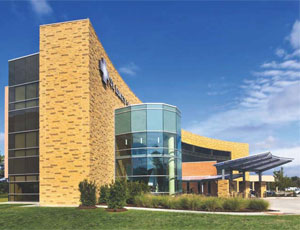The stagnant economy has forced Orlando city leaders and community arts supporters to revise original plans for a $450-million Dr. Phillips Center for the Performing Arts (DPAC), the second component of the city’s downtown venues building program.

The city will proceed with a phased project and now with a $383 million budget.
The center has raised about $88 million from private donors. Orlando Mayor Buddy Dyer and center officials say breaking ground on the center will help spur additional private donations.
“We can’t not move forward with the PAC,” Dyer says. “We’ve created this momentum, and if we don’t capitalize on it, we could lose that momentum in terms of fund-raising.”
The city had counted on $130 million in tourist development tax dollars to build the facility, but rather than growing as projected, tourist tax collections have decreased by at least 15%. Only about $10 million in tourist dollars are now available for the center, which led the city to re-evaluate financing to get work started on the building.
The City Council approved the sale of $69 million in Community Redevelopment Agency bonds in March, in addition to $70 million in bonds approved in August 2009, which included money for land acquisition. The city will clear land for the center starting this spring and begin soil remediation on a former parking lot in preparation for Balfour Beatty Construction of Orlando to break ground late this fall.
The 250,000-sq-ft, $130-million construction first phase will include two of three planned theaters, including the 2,700-seat Disney Theater, which can accommodate Broadway plays, and the 300-seat Jim and Alexis Pugh Community Theater, designed for smaller theater company performances. A third multiform hall, able to convert from theater seating to a flat floor, will come in a later phase, as will administration facilities, rehearsal halls and 10,000 sq ft of education space.
The first two theaters, lobby and banquet area will sit on a pile foundation, but the acoustically more sensitive multiform hall will float on neoprene pads atop a mat foundation to isolate the hall from outside noise.
“The second hall being isolated makes it easier [to build in phases] because it’s a separate building,” says Michael J. Gross, senior construction manager with DPAC development partner Hines in Orlando. “An acoustic isolation joint provides an ideal location to define the separation.”

Post a comment to this article
Report Abusive Comment